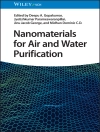In this volume, Professor He and his coworkers summarize polyethylene glycol (PEG)-promoted CO2 chemistry on the basis of understanding about phase behavior of PEG/CO2 system and reaction mechanism at molecular level. As PEG could be utilized as a green replacement for organic solvents, phase-transfer catalyst, surfactant, support in various reaction systems, significantly promoting catalytic activity and recovering expensive metal catalysts, particularly regarded as a CO2-philic material, the authors focus on special applications of PEG in CO2 capture and utilization, including PEG-functionalized catalysts for efficient transformation of CO2 and PEG-functionalized absorbents for efficient CO2 capture.
Furthermore, they describe carbon capture and utilization strategy as an alternative approach to address the energy penalty problem in carbon capture and storage.
Interestingly, the authors also discuss PEG radical chemistry in dense CO2 as rather creative and unusual use of PEG, presumably serves as a reaction medium and a radical initiator for radical chemistry.
विषयसूची
Introduction.- Phase Behavior of PEG/CO2 System.- PEG / sc CO2 Biphasic Solvent System.- CO2 Capture with PEG.- Functionalized-PEG as Catalysts for CO2 Conversion.- CO2 Capture, Activation and Subsequent Conversion with PEG.
लेखक के बारे में
Professor Liang-Nian He
State Key Laboratory and Institute of Elemento-organic Chemistry
Nankai University
Weijin Rd. 94
Tianjin, 300071
P. R. China
Tel: +86 22 23503878
Fax: +86-22 23503878
Email: [email protected]
Professor Liang-Nian He received his Ph.D. degree from Nankai University in 1996 under the guidance of academician Ru-Yu Chen. He worked then as a Chinese postdoctoral fellow with academician Ren-Xi Zhuo at Wuhan University. He had worked as a Postdoctoral Research Associate at National Institute of Advanced Science and Technology, Japan from 1999 to 2003 before joining Nankai University in April 2003. He has over 130 scientific publications and 6 patents. He also edited 8 books and chapters, delivered more than 30 invited lectures at international/national conferences and universities and research organizations. Now He is a Fellow of the Royal Society of Chemistry (FRSC), an Editor-in-Chief for “Green and Sustainable Chemistry”, an associate Editor of “Sustainable Development”, and a member of Editorial Broad of “Current Organic Synthesis”, “Current Chemical Research”, “Reports in Organic Chemistry”, “Current Catalysis”, “Recent Patents on Catalysis”, and a member of Chinese Fine Chemical Committee.
Current research: His research involves CO2 chemistry, green synthetic chemistry, catalysis in green solvent and biomass conversion (castor-based energy), particularly chemical transformation of CO2 into fuels and value-added chemicals as well as CO2 capture and utilization. Great efforts have been directed towards constructing C-C, C-O and C-N bond on the basis of CO2 activation through molecular catalysis owing to its kinetic and thermodynamic stability. The aim of his research is to demonstrate the versatile use of CO2 in organic synthesis, with the main focus on utilization of CO2 as a building block for synthesis of industrial useful compounds and fuel additives such as cyclic carbonates, oxazolidinones, lactones, quinazolines, etc. CO2 capture by using efficient chemical absorbents and the potential use of dense CO2 (supercritical CO2) or green solvent like ionic liquid, polyethylene glycol as an alternative solvent and otherwise specific roles in organic synthesis are also involved.
Current research: His research involves CO2 chemistry, green synthetic chemistry, catalysis in green solvent and biomass conversion (castor-based energy), particularly chemical transformation of CO2 into fuels and value-added chemicals as well as CO2 capture and utilization. Great efforts have been directed towards constructing C-C, C-O and C-N bond on the basis of CO2 activation through molecular catalysis owing to its kinetic and thermodynamic stability. The aim of his research is to demonstratethe versatile use of CO2 in organic synthesis, with the main focus on utilization of CO2 as a building block for synthesis of industrial useful compounds and fuel additives such as cyclic carbonates, oxazolidinones, lactones, quinazolines, etc. CO2 capture by using efficient chemical absorbents and the potential use of dense CO2 (supercritical CO2) or green solvent like ionic liquid, polyethylene glycol as an alternative solvent and otherwise specific roles in organic synthesis are also involved.












